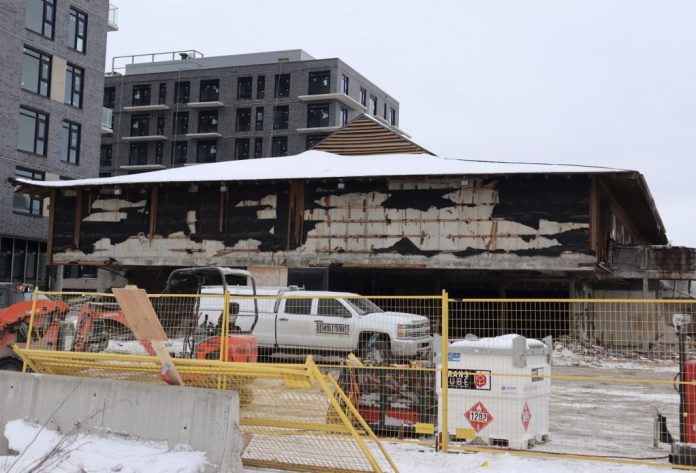The former Talisman Motor Inn turned Travelodge Hotel has been torn down, paving the way for five new residential buildings containing 900 units.
But the Japanese Pavilion — also known as the “tiki hut” — whose basement was home to the popular Beachcomber Lounge, was supposed to stay. It’s now been reduced to rubble.
The building, designed by Harold Shenkman and Bill Teron, was on the heritage registry. It was intended to be incorporated into the new development as a “key component.”
The “landmark” was “a rare example of Japanese influenced architecture in Ottawa,” a staff report read.
River ward councillor Riley Brockington said when work started, developers realized it would be impossible to work around the site while constructing an underground parking garage below where the lounge once stood.
It was in poor condition and could not be relocated, he noted.
“They got permission to take it down and the commitment from the owners is they will build a pavilion with the same look and design,” Brockington said. “It will be a common room or party room for people to gather.”
Still, he wasn’t impressed. Brockington said he was not aware of the change before demolition occurred. The city, however, was.

Questions are now being raised as to why this wasn’t picked up on earlier.
“They changed contractors. There were a lot of staff who were not part of this process at the beginning,” said Brockington.
Kitchissippi ward councillor Jeff Leiper, who is the chair of Ottawa’s planning committee, said the developers worked within the permissions they had.
Many of the original features will be restored, but it’s unclear if any of the original material will be salvaged. The original building plans are in the developers hands and are expected to be used.
It will be “in the same spirit and location as part of the design for our Talisman development,” said Tom Casey, chief financial officer and co-president of developer Holloway Lodging Corporation.
Local architect Toon Dreessen said the pavillion’s removal will result in Carling Avenue lacking more of an identity than it did before.
“Any architect could have told you it would be effectively impossible, even at an early stage, to leave that building intact and put a structure underneath. Yet it got approved and nobody challenged it,” he said. “We will end up with something not quite as authentic. It won’t be the same. It will be a stage set — a piece of theatre — not a piece of heritage.”
